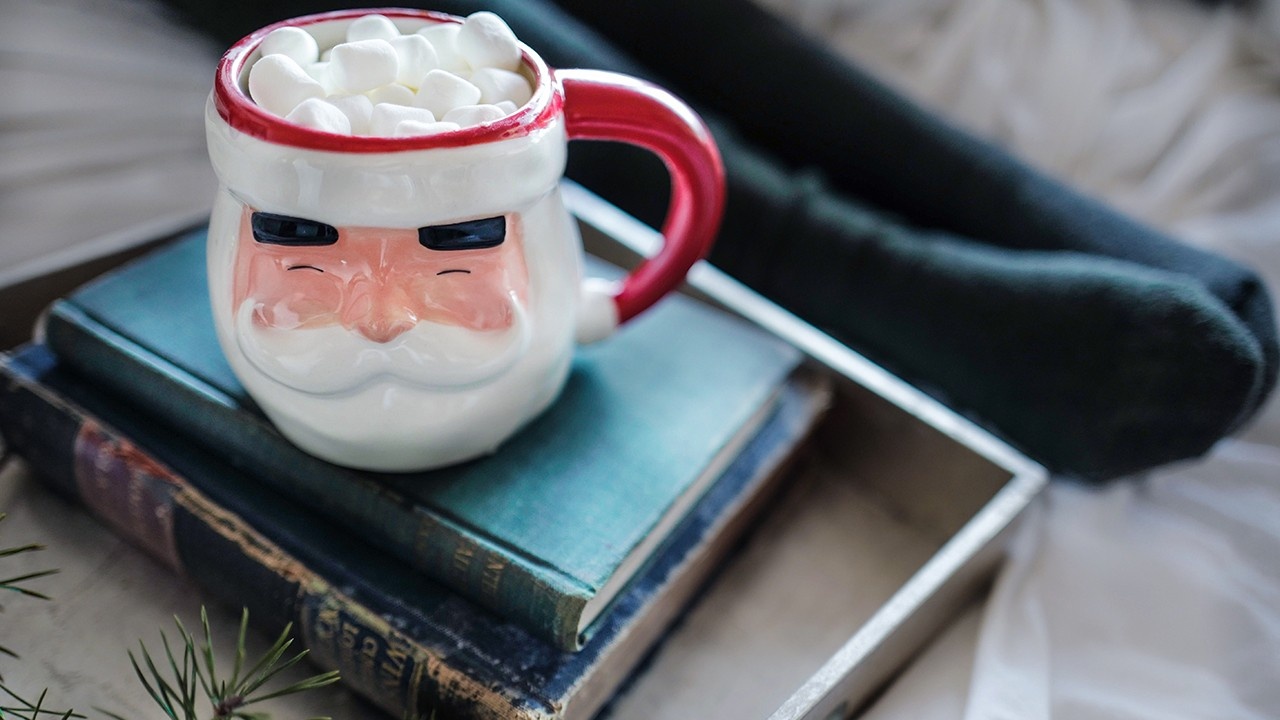Recovery and restoration
We can spend nearly two-thirds of our lives asleep, yet often place less importance on this crucial de-stressing time than our waking hours. Sleep is all about recovery – physical, emotional and energetic. In order to function fully and cope with the day’s demands, we rely on the immune facilities, detoxification, tissue and muscle healing and emotional processing that occur during the wee small hours. If this downtime isn’t respected, we may quickly see stress-related symptoms like fatigue, irritability, poor concentration, skin complaints and poor recovery from illness.
Lack of sleep, even at a small accumulative level can lead to craving sugar and stimulants as our bodies try to fuel up in the face of less vitally built-up energy. Indeed too little sleep has been associated with incremental weight gain through increased appetite for this very reason.
Blood sugar balance and calm for quality sleep
Sleep quality comes from balanced blood sugar levels throu...
Movement to help your body naturally move through trauma
The term trauma is used to describe the state an individual is left with after a shock or prolonged danger or distressing event has passed. Its prevalence in society has grown from the recognition of the symptoms war veterans were experiencing in the 1980s with the diagnosable condition Post-Traumatic Stress Disorder (PTSD).
This has also opened up to recognise that trauma does not just stem from large, traumatic events but can be as a result of Adverse Childhood Events (ACEs) and the definition extended to anything that overwhelms to the point where we can’t cope, on an individual basis.
The medical world has long viewed trauma as a purely psychological issue, although recent research shows it to be a full physiological response; a reliving in this moment of an event or felt state that came before. For those with trauma, this is the only way more primal, instinctual responses can make sense of the continual.
Trauma tends to...
Stretching can be something we look forward to or dread within our exercise regimens, so understanding its purpose and effects can create more depth and motivation, however we feel. Messages can be conflicting, so some simple basics can help us navigate confusion towards following your body’s needs.
Stretching for sports is not the same as in yoga; rather than looking to improve flexibility alone, static (still) stretching after exercise is designed to lengthen muscle shortened through use back to its normal range of motion (ROM). This is why dynamic (moving), rather than static is recommended for warm-ups. More flexibility ie more range through muscle and around joints may actually impede the action and strength of specific movements needed for sport.
We can’t actually lengthen muscle – this is already determined by its insertion and origin ie where it is attached and leads to in terms of bones and tendons – but we can lessen resistance to a stretch, where the nervous system doesn’t...
Simple and effective
One of the most popular recommendations I give to clients is dry skin brushing. This is a simple self-care home routine that can take as little or long as you have. Even doing for a minute a few times a week can have noticeably beneficial effects and most people find it is so enjoyable that it becomes part of their bathing routine very easily. Stimulating the skin in winter is important when it gets less exposure to the natural stresses of the outdoors.
Self stimulation!
The main aim behind skin brushing idea is to move out surface toxins and 'energise' your skin to get blood flow going. This is also stimulating your lymphatic system, the fluid channels of your immune system which run beneath the skin. As your skin is your largest organ and the second organ of detoxification after the liver (via the lymphatic system), brushing it increases the capacity of your skin to eliminate toxins, making it easier for your whole body to shed wastes. Dry skin brushing also r...
With Christmas comes the onslaught of brightly coloured wrappers and decorated boxes adorning chocolates, biscuits and sweets. For some, this represents dietary abandon with the resolution to bring it all round in the New Year.
But some of us have had enough of that swing and prefer not to feel like we’re lurching from a sugared-up state that leaves us feeling sluggish, bloated and, well, a bit dirty, to somehow suddenly having the willpower to give it all up come Hogmanay. So let’s unpick some of those Christmas habits in order to maybe evolve some healthier ones...
While original yuletide feasts were designed to celebrate coming together as communities to nourish and fuel for the winter months, human’s love of the sweet stuff seems to get a free pass at Christmas. It can even seem conspiratorial when, if you politely decline the third round of mince pies of the day, you can receive sideway glances that make you feel like you’re Scrooge.
Personally, a few years back I reached the l...
It's easy to lose our sense of satisfaction and need-over-want at this festive time, but finding ways to stay connected can make the whole shebang leave a better taste in our mouths in the aftermath...
So the big question is, can we retain a sense of 'enough already' in the face of excess? The lead up to the main event is a good time to step back, take stock and see how Christmas is permeating our lives and our expectations.
Are you dizzy as a child at the thought of Santa’s touchdown or feeling the heavy burden of endless present-buying or relatives descending? Personally, I tend to feel quite different each year… BC (Before Child) I used to be able to get full-on festive one year and then positively ignore its existence the next, just enjoying some holiday time without the razzamatazz.
Now I’m swept up in the childhood vision of it all, it’s a time to experience with my daughter what I wish it to be; not about buying and getting yet more stuff, but about giving, sharing, joy, ligh...
Winter in the 21st century can seem all about preparations for Christmas - shopping, decorations and TV, but inside, it’s all systems on heat and protection as we move into the coldest months of the year.
How can we ensure we keep strong through these months, instead of crippling our resources when we need them most?
It is always good to remember that Christmas for our fore-mothers and fore-fathers was always a time to see in the winter and prepare for the colder months to come. A huge difference between then and now is the availability of the food itself.
When we relied on what the land gave us – or later what we grew and raised – every calorie was precious, especially those from fat, the best compact source of energy to see you through the winter.
Now calories are all too abundant and living in centrally heated homes, we have removed the need to produce as much body heat from fat.
The motivation of a feast at the height of winter no longer fits with the way we live. Frenzied con...
With so much emphasis on what to eat, the how can get rather left behind, but the full process of digestion – breaking down and absorbing food – demands as much calm and mindfulness as any aspect of our yoga practice. When this is compromised, partially digested food in the gut can cause gas, bloating and contribute to IBS symptoms.
Time, stress and habit often see us bolting food or eating on the go without much thought. Optimal digestion needs energy resources fully directed to the gut and any movement quickly reroutes it out to the muscle; including just standing and using postural muscles. Stress also sends a signal to prepare for protective physical movement and again, muscle wins out. We feel a tense body, often including gripping and tightness in the belly as digestive processes are halted. Our digestive tract has nervous system activity of its own and you really can trust ‘gut feelings’ as a measure of stress.
It is the parasympathetic or calming and meditative tone of the ne...
Our Most Natural Movement
Walking is the best way to improve lower body, reproductive and digestive circulation; in fact any activity that moves the whole body around is beneficial, although cycling can restrict the pelvic area. Physiologically we are designed to walk to get the whole circulation moving and it should be regular, in short doses throughout the day. The lymphatic system does not have a pump like the bloodstream and the heart, and relies on your movement, which is therefore an important part of supporting your immune system. The naturopath Marion Kirkham states “It is the avoidance of being sedentary which is vital; so those who sit at their desks, then lie on their sofa and then go to the gym several times a week are not helping their circulation. This is inconsistent and unnatural.”
The US Surgeon General has recently recommended 10,000 steps per day and it is widely recognised that a minimum of 2 miles a day will keep your circulatory system in working order. If a per...
First published in What Doctor's Don't Tell You Magazine.
The menopause is a natural transition in a woman’s life cycle. It is not an illness, but a passing into a new phase, where we drop away from the more frenzied activity of earlier years and into a more relaxed approach. Hormone fluctuations and resultant symptoms accompany each female biological life stage and changes are felt on all levels; physically, emotional and spiritually as we take stock and prepare to move on.
Menopause follows puberty and childbirth - each is a phase where moving inwards to reflect can help us understand ourselves and make adjustments. Yoga is a system that asks us to be present and meet whatever is arising with kindness and curiosity. At a time where we may have a confused relationship with our bodies, yoga can help us move with, rather than against natural physical tides.
How our changing biology feels
Menopause is defined as the time when monthly periods have stopped for more than 12 consecutive ...
5 Natural (and free) at-your-desk Energisers – body tricks to stop you turning to the sugar and caffeine
When we’re locked into work mode with deadlines and overload, even a quick break may seem impossible.
It’s important to get up and move around, but at those times in between helping ourselves to stay and concentrate can help the achievement that also relieves stress.
Even when we’re just sitting at our desks, we’re using up masses of energy on brain power. At a normal resting state our big brains demand around 20% of our total energy expenditure.
If we’re under pressure, a stressed state can increase that energy proportion to around 70-75% as our brains are vital to survival when our bodies sense this as danger.
Running at that level, it’s easy to see how we can get the craving signals that send us towards the instant energy highs that are sugar and caffeine.
Chocolate, biscuits, tea and coffee can perk up us in the short-term, but they do add to our stress load as they rob us...
First published at Yogamatters.com
Finding calm in life can seem more and more elusive in our busy, often oversubscribed lives. Our expectation of how much information we can take in and how much we achieve is often at odds with the recovery our bodies and brains really need to function optimally and feel a sense of ease in our immediate environment.
We humans are characterised by the capabilities of our big front brains, the central cortex with its frontal lobes allows us to dream, imagine, create, plan, analyse and use language. When calm and relaxed, these functions can tick along and allow us to move through life joyfully, but when stress or anxiety rise, we move into the survival fight-or-flight mode and our whole relationship with the world around us changes.
Stress can have us feel like we’re living ‘neck-up’, where thoughts, ruminations and worries dominate our internal landscape. This is a fall-back to the self-protection our mind-body perceives we need, even if we’re stres...
















